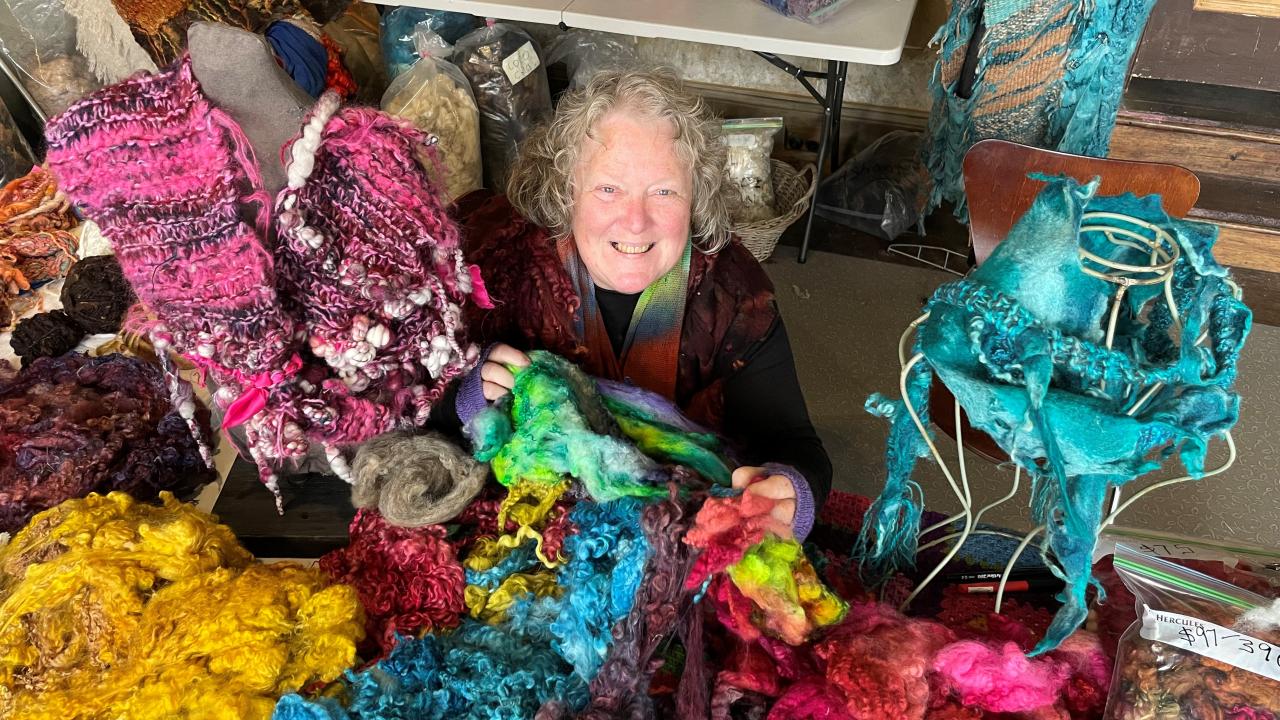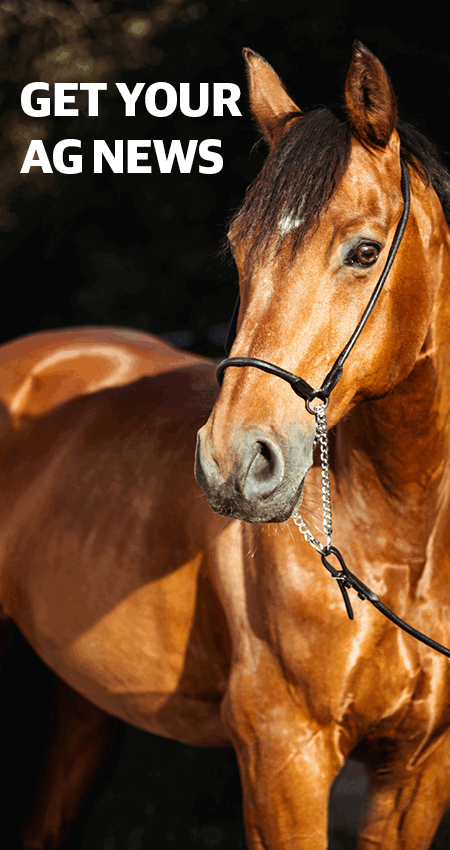Carol-Anne has a yarn to tell

Carol-Anne Morrison has put a new spin on the wool from some of the oldest breeds of sheep in the world at her hobby farm in Loira, West Tamar.
The English heritage breeds are grown for the texture and colour of their wool as well as their meat, with the amazing results of spinning, knitting and dyeing their fleece on display at the weekend’s Heritage and Bullock Festival in Oatlands.
Half of the historic Commissariat building in High Street was a soft cloud of colour with Carol-Anne’s display as the current artist in residence.
Scarves, wall hangings, garments and bags of wool that looked like cotton candy at a fair filled every available space and it shone a spotlight on a 10-year passion that evolved through a TAFE textiles course.
“I’ve been a crafter all my life,” Carol-Anne said.
“But I just fell in love with wool and started breeding my own sheep on four hectares and various paddocks belonging to neighbours.
“I get Tom Squires from Kelso, a magic shearer, to shear the sheep and because they’re so tame I like to stay with them while they’re being shorn.”
Carol-Anne has rare and endangered English Leicester sheep as well as Finnish Landrace, or Finns for short, and various mixes of the two.
Her flock of 50 is about to grow with the lambing season about to begin.
“The English Leicester produces a lustre, long wool with natural curls,” she said while pointing to a rug hanging behind her made from the wool from two wethers.
“Because it’s a long wool I can get up to 25cm staple from 12 months of growth and it’s beautifully curly,” she said.
“Wool from the Suffolk English Leicester crosses, like Lamington Longlegs (yes, all of her sheep have names), is particularly soft and lovely to wear against your skin.
“His fleece is actually pre-sold each year to the same lady who is a spinner and garment knitter.”
After shearing, each fleece is put in a separate bag, instead of going into the one bale, and a sample is stuck to the outside so that even a year or two later Carol-Anne can target the micron and colour she desires.
“For garments I like the wool to be above 30 microns so that it stands the test of time,” she said.
“And Runes, a third cross English Leicester Finn, I like to use for spinning my art yarn, which is quite chunky, because it has four lovely colours in it.
“It took four years of breeding to achieve that and she is treated like royalty and quite the diva in fact.
“Her dad is a double silver but also throws morrett sheep, which produces caramel coloured wool.
“I breed for colour, for different applications, and I love it, plus it gives these sheep that are no longer popular for their meat a new purpose and it helps to keep the breed alive.”
The unusually coloured wool finds its way to Europe, the US and Canada in various forms, simply through word of mouth.
Some pieces are made from the coloured one-pot dyed wool, which Carol-Anne loves to make up into unique designs.
She even makes her own cidar vinegar to set the dye, so that she knows there’s no toxicity and she can dispose of it in the garden.




Add new comment